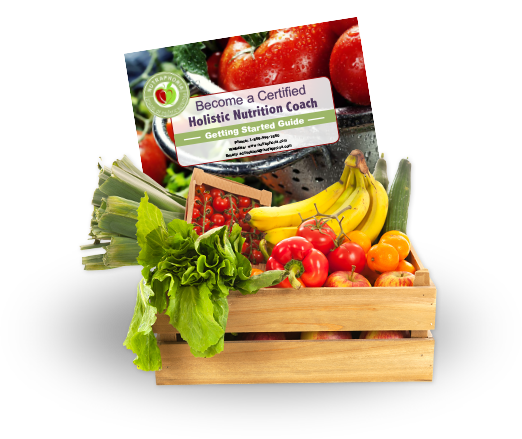November 20, 2017
The term ‘superfood’ seems to be popping up a lot these days. You might have even gotten to the point of subconsciously rolling your eyes at just the mention of it. Well I’m here to tell you that once you’re able to push past the word ‘superfood’ your world will open up to some amazing foods you may have never even heard of before.
Superfoods (aka ‘Functional Foods’) help to fight disease, prevent damage to your cells and hit the slow motion button on the aging process. They are easy to find, can be bought in bulk to get the most bang for your buck and are easily incorporated into your everyday routine. I’ve listed them in alpha order below, because that’s just how I roll.

10 Superfood Superstars
Cacao is not to be confused with cocoa. They look the same but cocoa has been cooked at high temperatures which lowers the overall nutritional value. Raw cacao powder is a source of protein, calcium, magnesium, carotene, thiamine, riboflavin, sulfur, and flavonoids. Use cacao (70% cacao content or higher) in place of any chocolate you would normally use. Moderation is key as cacao is high in calories and is also a stimulant.
Chia is a tiny edible seed with a mild nutty flavor that grows abundantly in Mexico. They were a staple food for Aztec warriors back in the day. Chia seeds are higher in protein than any other seed and they help to slow the process of carbohydrates converting to sugar. It is an all-purpose seed that can be added to just about anything. When mixed with a liquid it turns into a gel-like substance that can be great for use as a thickener or binder, or even as an egg substitute.
Coconut oil has been used as a staple by the Polynesians since ancient times, and they have some of the lowest rates of heart disease in the world. Coconut oil is so versatile that you can eat it, use it as a skin lotion and give your hair the royal treatment with it. Replace one of your regular cooking oils with coconut oil, use it instead of butter, add it to your smoothies and coffee or even eat it by the spoonful. Make sure you look for virgin, organic, unrefined, and cold pressed on the label. Your coconut oil should smell and taste like coconut deliciousness.
Fermented foods contain live bacteria that is very beneficial for your digestion and colon health. They are common in the cuisine of Korea, China, Japan, and North and Central Europe. A few examples of delicious fermented foods are kombucha, kimchi, sauerkraut, tempeh and miso. True fermented foods will be in the refrigerated section of the grocery store as they will have ‘active’ or ‘live’ cultures.
Garlic is one of my personal all-time favourite foods. Just the smell of it can make my mouth water. Add in some onions and mushrooms and I’m in heaven! Turns out garlic and onions in combination are a couple of the best sources of uniquely powerful antioxidants. Worried about catching a cold this winter? Garlic, garlic, and more garlic!
Goji Berries are the smaller, redder, harder version of raisins and have been used in traditional Chinese medicine for 2,000 years. Great things do come in small packages as these little guys are packed with fiber, beta-carotene and vitamin C as well as 18 amino acids (including all of the essential amino acids). They are also low in calories and fat free. Add them to your tea, salad, trail mix, or smoothies.
Hemp is most often found in seed form, but there is also butter, oil, flour and protein powder. They are a great source of protein with one serving including 9 grams of protein. Hemp also includes a great dose of healthy fat. Sprinkle hemp seeds on oatmeal, salad, cereal, and sandwiches or add it to your smoothie.
Kale is one of the tougher leafy greens but can be easily softened to be more palatable. It has fewer calories for more nutritional value than almost any other food. Just one cup of this amazing superfood contains 5 grams of fiber and is a great source of the minerals copper, iron, manganese, phosporus, and potassium. It also contains 15% of the daily requirement of calcium and vitamin B6, 40% of magnesium, 180% of vitamin A, 200% of vitamin C, and 1,020% of vitamin K. Eat kale on its own (softened, with some lemon juice…yum!) or in smoothies, soups, sauces and salads.
Maca is generally sold as a dried powder and has been a staple in the Peruvian Andes for thousands of years. It contains more than 10% protein, 20 amino acids, and 7 essential amino acids. Add it to your smoothie, tea, or coffee or take it as a supplement.
Sprouts are the most reliable year-round source of vitamin C, beta-cartone, and many B vitamins. Sprouting essentially pre-digests our food for us so our body doesn’t have to work so hard. Almost any vegetable or grain can be consumed in sprout form (broccoli, cauliflower, mustard greens). Add sprouts to your salads, sandwiches, soups and smoothies.
Now go out there and SUPERCHARGE your life!

Reference:
Integrative Health Fundamentals: Chapter 8


